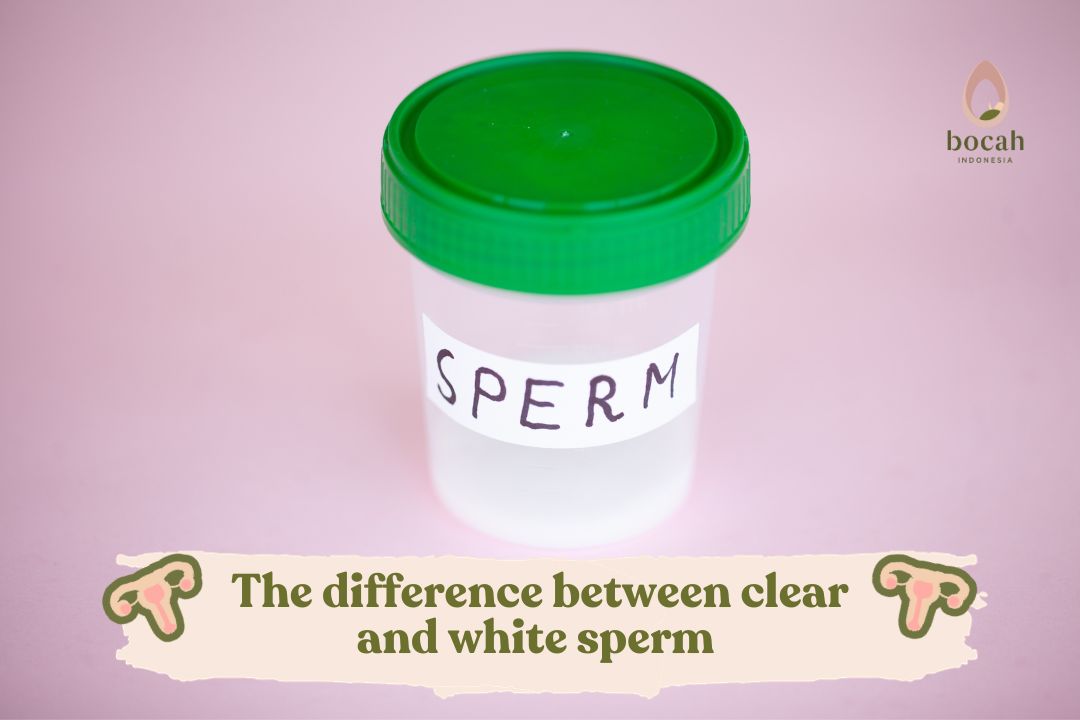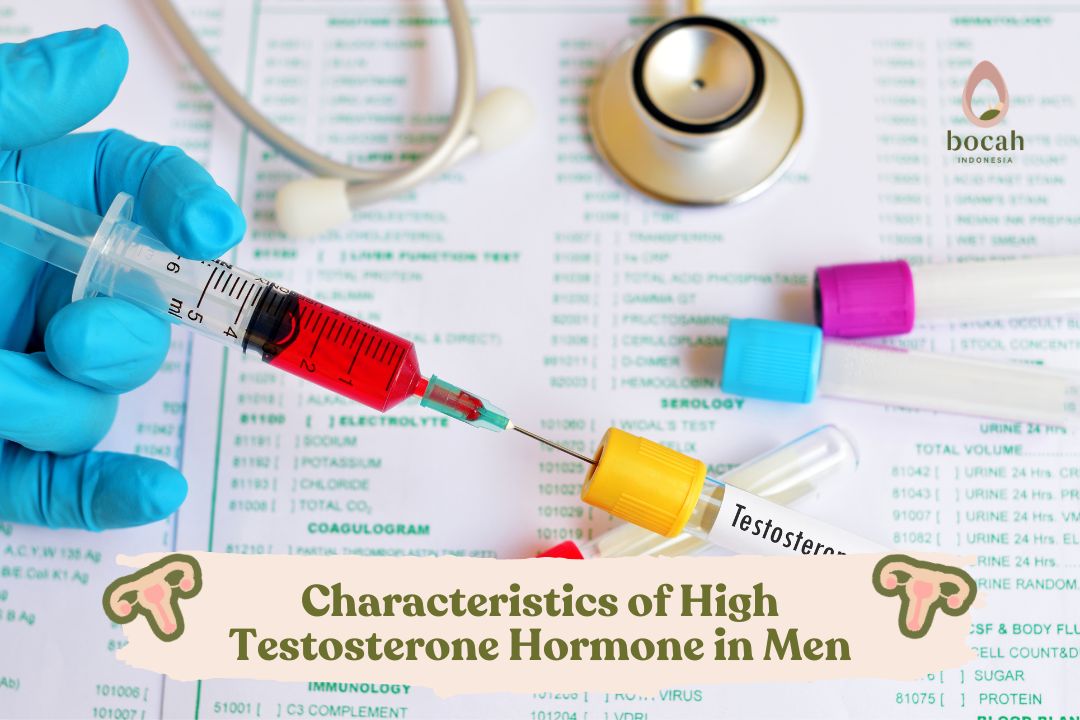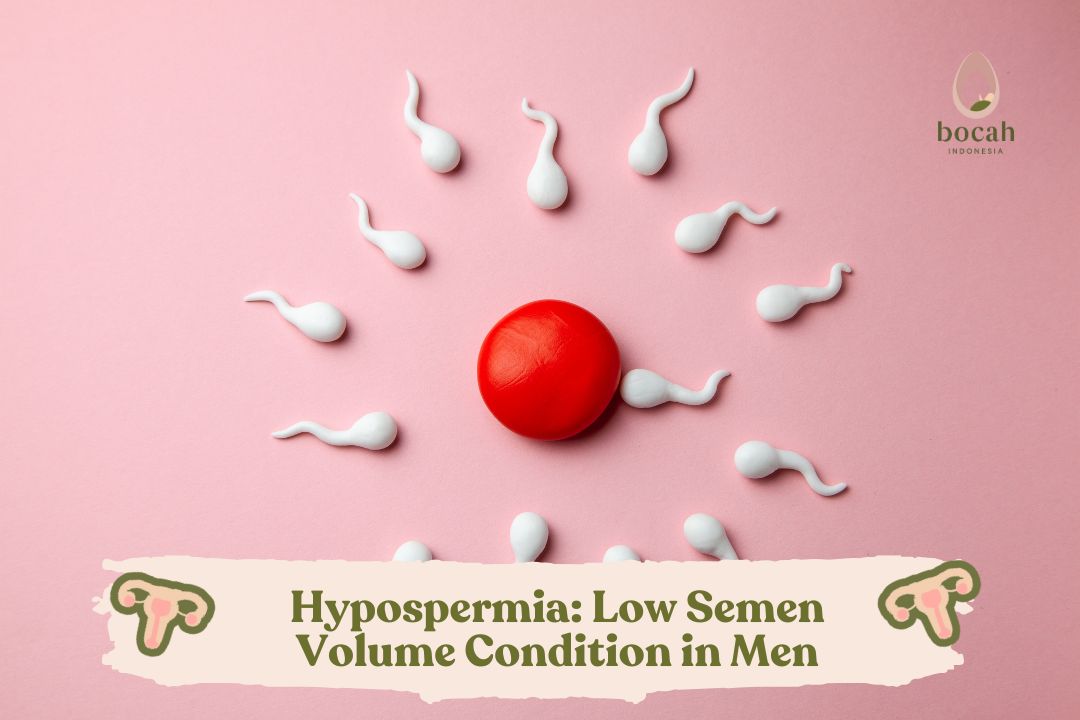Clear Semen Makes Dad Dizzy

Semen is usually white or slightly gray, but sometimes it can be clear. Find out the causes here.
Healthy sperm cells are crucial when planning pregnancy with your partner. Sperm is the male gamete in reproduction. When sperm cells meet an egg cell, they can undergo fertilization, resulting in an embryo.
So, does clear sperm indicate infertility in Dad? Find out the difference between clear and white sperm here!
Differences Between White and Clear Sperm
Semen is a fluid produced by the male reproductive organs, containing sperm cells used to fertilize a female’s egg.
Tanya Mincah tentang Promil?
Semen also contains substances that support and protect sperm during their journey to the egg. Semen ejaculation usually occurs during sexual intercourse or masturbation.
Sperm quality can be assessed by observing its color. Clear sperm typically refers to pre-ejaculate fluid, while white sperm is part of the ejaculation.
The color can vary from transparent to whitish-gray, and sperm color is usually not a serious issue unless there are underlying signs of health problems.
-
Clear Sperm (Clear Sperm)
-
Clear or transparent sperm is generally considered normal.
-
This clear color may indicate that the body is not producing many sperm cells at that time or that Dad has ejaculated too frequently in a short period.
-
Clear sperm can also occur if Dad is not adequately hydrated. Drinking enough water can help improve sperm clarity.
-
White Sperm (White Sperm)
-
White-colored sperm is more common and may indicate that Dad has a higher sperm count.
-
The white color can occur when there are many sperm cells in the ejaculation, and this is usually a sign of good fertility.
-
The viscosity (thickness) and the number of sperm in white sperm are also much higher.
-
However, very white or thick sperm can also occur if Dad is dehydrated or has other health problems or infections. In such cases, the change in sperm color may be due to inflammation or the presence of white blood cells in the sperm.
Sperm Colors to Be Concerned About
Sperm colors to be concerned about are those that are very abnormal and can indicate health problems. Some concerning sperm colors include:
-
Red or Red-Brown
Red or red-brown sperm color can indicate the presence of blood in the semen, known as hematospermia.
Hematospermia can be caused by infections, trauma, inflammation, or serious issues like cancer. If Dad observes such sperm color, it’s important to consult a doctor promptly.
-
Yellow or Green
Yellow or green sperm color may indicate an infection or inflammation in the reproductive tract. Such infections can be caused by bacteria and require medical treatment.
-
Excessively Watery
Sperm that is very watery, thin, and runny may indicate issues with the ejaculation ducts or problems with the seminal vesicles. This condition can affect ejaculation smoothness and fertility.
-
Overly Clear
Excessively clear or transparent sperm may indicate a low sperm count or dehydration. If the sperm is too clear continuously, this could be a sign of an issue.
It’s important to remember that variations in sperm color can be caused by many factors, and some color changes may be temporary. Factors such as nutrition, diet, hydration levels, stress levels, or specific illnesses can also affect sperm color.
Tips for Getting Healthy Sperm
If you and your partner are trying to conceive, it’s important to pay attention to a healthy lifestyle, nutrition, and habits to increase your chances of successful pregnancy.
Maintaining a healthy lifestyle also has a significant impact on the quality of your sperm, you know! Here are some healthy lifestyle tips that you can follow to improve sperm quality.
-
Maintain a healthy weight. Some research suggests that an increased body mass index is associated with a decreased sperm count and sperm motility.
-
Consume nutritious foods like vegetables, fruits, whole grains, healthy proteins (e.g., fish, chicken, legumes), and low-fat dairy products. Adequate nutrients such as folic acid, zinc, and antioxidants (such as vitamin C and E) are also essential to support sperm quality.
-
Limit caffeine intake. Some studies have shown that excessive caffeine consumption can affect sperm. Consider reducing your caffeine intake.
-
Prevent sexually transmitted infections (STIs). STIs such as chlamydia and gonorrhea can also lead to male infertility. Staying in a monogamous, faithful relationship with an uninfected partner can help protect against STIs.
-
Manage stress. Stress can reduce sexual function and disrupt the hormones needed for sperm production.
-
Exercise. Moderate physical activity can increase powerful antioxidant enzyme levels, which can help protect sperm.
Things to Avoid to Keep Your Sperm Healthy
Sperm can be very susceptible to environmental factors, such as excessive heat exposure or toxic chemicals. Some habits that you should avoid to maintain sperm quality include:
-
Don’t smoke. Men who smoke are more likely to have a low sperm count. If you smoke, seek help from a doctor to quit.
-
Limit alcohol consumption. Heavy drinking can lead to reduced testosterone production, impotence, and decreased sperm production.
-
Avoid lubricants during sex. While further research is needed on the effects of lubricants on fertility, consider avoiding lubricants during sex.
-
Talk to a doctor or pharmacist about the medications you’re taking. Calcium channel blockers, tricyclic antidepressants, anti-androgens, opioids, and other drugs can contribute to fertility issues. Anabolic steroids and other illicit drugs can have similar effects.
While the benefits are not yet fully proven, wearing loose-fitting underwear, avoiding prolonged sitting, avoiding saunas and hot baths, and limiting scrotal exposure to hot objects like laptops may help improve sperm quality.
That’s an explanation about the difference between white and clear sperm. If you have concerns about sperm quality or if changes in sperm color occur along with symptoms such as pain or sexual dysfunction, it’s advisable to consult with a medical professional or a urology specialist.
For more information on conception, reproductive health, and other pregnancy-related tips, you can read on the Bocah Indonesia website.
Source:
- Khodamoradi, et al. (2020). Laboratory And Clinical Management Of Leukocytospermia And Hematospermia: A Review. DOI:10.1177/2633494120922511.
- https://www.ncbi.nlm.nih.gov/pmc/articles/PMC7290265/
- Mayo Clinic (2022). Discolored Semen: What Does It Mean?
- Jewel, T. Healthline (2022). Yellow, Clear, Brown, and More: What Does Each Semen Color Mean?
- Wint, C., & Gotter, A. Healthline (2019). What You Need to Know about Blood in Semen.
- Mayo Clinic (2022). Healthy sperm: Improving your fertility








